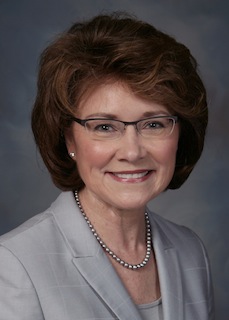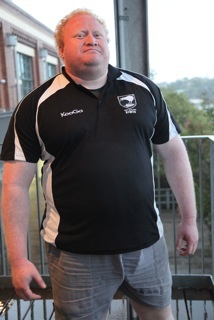Albinism
The Albinism Fellowship of Australia (AFA) http://albinismaustralia.org/ is a national, non-profit organization established in 2005. The fellowship is run by volunteers who all have been personally touched by albinism in some way. The AFA’s key purpose is to provide support, education and fellowship to those with albinism, parents of children with albinism as well as their families and friends. While the albinism community in Australia is only small, the AFA provides a united voice to encourage productive developments and support within business, government and media.
- Details
- In Albinism
- /
 Leading international medical professionals will reveal the latest developments on surgery and genetics to the Albinism Fellowship of Australia national conference in Sydney this weekend.
Leading international medical professionals will reveal the latest developments on surgery and genetics to the Albinism Fellowship of Australia national conference in Sydney this weekend.
For the first time, guest speakers from the US, including eye specialist Professor Gail Summers and geneticist Dr Murray Brilliant will attend the biennial conference, to share their experience and insights.
Gail Summers, MD, is Professor from the Departments of Ophthalmology and Visual Neurosciences, and Pediatrics Minnesota Lions Children's Eye Clinic. Murray Brilliant, PhD, Senior Scientist, is the Director at the Center for Human Genetics at the Marshfield Clinic Research Foundation.
Both are deeply interested in albinism in which a person - an albino - cannot produce the pigment melanin, so they typically have fair skin and hair and a visual impairment, often reading in the ‘legally blind’ category.
More than 230 people are expected at the Albinism Fellowship of Australia national conference with runs from October 11-13. The event attracts people with albinism, their families and friends, medical and ophthalmic professionals from throughout Australia as well as NZ, Fiji, Kenya, Ghana, Nigeria and the US.
Albinism Fellowship President Elizabeth Beales said this expert input into the weekend was highly anticipated. “This level of knowledge is of immeasurable value to the people attending,” she said.
“While albinism results in a visual loss which places most albinos in the legally blind category, there’s no medical intervention or surgery which can “fix” the vision, even with prescription glasses. While the retina and visual pathways are affected in-utero, medical procedures can sometimes provide ease or comfort to the muscles controlling the eyes, although the vision itself is not correctable.”
- Details
- In Albinism
- /
 Queensland will host a free, fun-filled event on March 29 to bring together Pacific Islanders with albinism to share experiences, access services and identify how they can assist compatriots with the rare genetic condition.
Queensland will host a free, fun-filled event on March 29 to bring together Pacific Islanders with albinism to share experiences, access services and identify how they can assist compatriots with the rare genetic condition.
The PolyVision event in Ipswich will provide an introduction to genetics, vision impairment, adaptive technology and services available for people with albinism in Australia. PolyVision will also have a fun atmosphere with DJ Mr John Sinisa presenting multicultural music and a catering menu featuring some Pacific Islander food favourites.
The event will also include several displays of interest such as Pacific Islander handicraft display, Vision Impairment Equipment Solutions selection from Vision Australia and artwork by photographer Mr Rick Guidotti on loan from the 'Celebrating Diversity' photographic exhibit.
Albinism is an inherited condition that can affect the colour of a person’s skin, hair and eyes and is found in many different human populations. Pacific islanders with albinism can have reddish gold hair; light brown, green or blue eye colour and white/ pink pale skin. Their vision is within the legally blind range, which means they need help with reading small print and seeing fine details, plus problems with light glare and depth perception.
While numbers vary, in North America and Europe, it is estimated that one in every 20,000 people have some form of albinism. Research by Ms Helene Johanson and the Institute for Molecular Bioscience identified that in one Polynesian population, one in 669 people is born with albinism – which is one of the highest recorded rates of Oculocutaneous Albinism Type 2 in the world. This research also found that people living in the islands have limited access to health resources and information, as a result their skin may be extensively sun damaged by early adulthood.
Off the Cuff

Simon Hackett speaks about Formula E racing on ABC Radio Adelaide
Australian renewable energy investor Simon Hackett last week spoke to Radio ABC Adelaide's Afternoons host Sonya Feldhoff about the benefits for replacing the cancelled Adelaide 500 motor race with a...
Read more
Seven simple steps for mental health in time of coronavirus
After the summer bushfires, the coronavirus pandemic and associated economic shutdown, “unprecedented” must be a standout favourite for Macquarie Dictionary’s Word of the Year for 2020. For the first time...
Read more
John Harris talks (a bit) about International Albinism Awareness Day on ABC Radio
John Harris, who has the honorary role of PR guy for the Albinism Fellowship of Australia, was interviewed by Peter Goers on the Evenings show of ABC Radio Adelaide on...
Read more
Start-ups are key to the future of everything
Nigel Lake, Executive Chair of global business advisory firm Pottinger, will tell this week's Myriad start-ups festival in Brisbane, running May 16-19, that Australia needs start-ups to protect its prosperity. Pottinger...
Read moreContact
Impress Media Australia
P: +61 8 8431 4000
E: john@impress.com.au
W: www.impress.com.au
Street:
Impress Media Australia
313 Portrush Road,
Norwood SA 5067
Click here for our location
Postal:
Impress Media Australia
Box 95, Kensington Park
South Australia 5068
